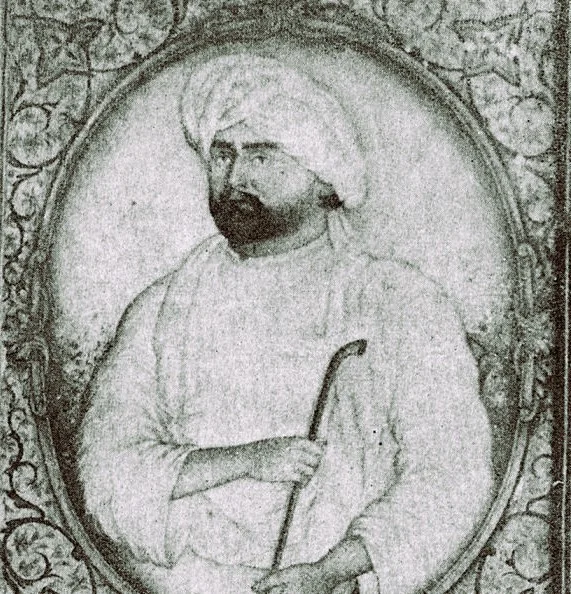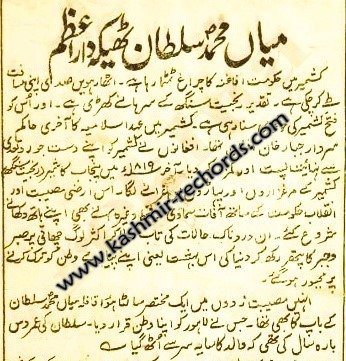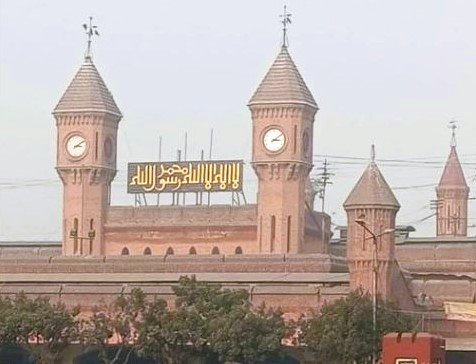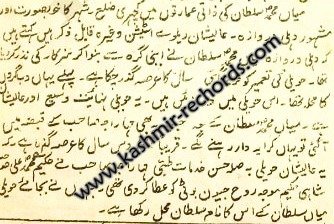
(Kashmir Rechords Exclusive)
In the early 19th century, the picturesque valleys of Kashmir were devastated by a series of merciless famines. Among the many who fled the land in search of survival was a young boy named Sultan Malik. Born into a Rajput Muslim family in Shahabad (Verinag), Kashmir, Sultan’s world was turned upside down when he became an orphan at the tender age of ten. With little more than hope and the guidance of his widowed mother, Sultan joined the exodus to Punjab—a journey that would ultimately lead him to an extraordinary destiny.

The Exodus to Punjab: A New Beginning in Lahore
The migration was fraught with hardship, but it led Sultan and his mother to Lahore, a city undergoing rapid transformation under the rule of Maharaja Sher Singh. Lahore, with its burgeoning construction projects, offered a glimmer of opportunity, though the city’s streets were unforgiving to the impoverished and unskilled. But Sultan was not one to succumb to despair. He was physically strong, with a fierce love for wrestling—a passion that would soon open unexpected doors.

Wrestling into Prominence: A Meeting with Maharaja Sher Singh
Urdu Newspaper and magazines of that era available with www.kashmir-rechords.com reveal that in a twist of fate, Sultan’s prowess in wrestling brought him into the limelight. During a wrestling match organized by Maharaja Sher Singh, the young Kashmiri boy defeated a well-known local wrestler, earning the attention of the Sikh monarch. Impressed by his strength and determination, the Maharaja granted Sultan an audience. It was during this meeting that Sultan shared his struggles in finding work, despite his skills and willingness to toil. Moved by his story, Maharaja Sher Singh awarded him a contract to supply lime (chuna) for the construction of the Lahore Fort—a decision that would alter the course of Sultan’s life.
The Rise of Thekedar Mian Mohammad Sultan
This contract was the foundation upon which Sultan built his future. His integrity and hard work quickly earned him a reputation, and soon he was known as Thekedar Mian Mohammad Sultan. His business thrived, and he became a key figure in the construction of several iconic buildings within Lahore’s walled city. Sultan’s rise from a struggling migrant to a celebrated contractor was nothing short of miraculous, a testament to his resilience and drive.
Legacy Beyond the Sikh Empire: Contributions to British Lahore
The fall of the Sikh Empire did not dim Sultan’s fortunes. The British, recognizing his contributions during the Sikh rule, entrusted him with numerous contracts, including the construction of army colonies and other critical structures. Among his most notable projects were the Lahore Railway Station, Landa Bazaar, Delhi Darwaza, and the grand Sultan Mehal. His work extended beyond mere construction; he built wells in the courtyards of buildings and havelis, acts of charity that endeared him to the people of Lahore.

Acts of Benevolence: Sultan’s Inn and Diplomatic Feasts

In 1853, Sultan built an inn near Delhi Gate, on the highway connecting Lahore and Amritsar. This inn provided much-needed rest to travellers and reinforced Sultan’s reputation as a benefactor. His generosity did not go unnoticed by the elite. In 1869, Sultan hosted a lavish feast for the Afghan monarch, strengthening ties between Lahore and Afghanistan. Seven years later, he welcomed Prince Albert Edward, the Prince of Wales, to Lahore, further solidifying his status as a man of influence and respect.
The Decline of Fortunes: A Legacy Endures
Despite his numerous successes, Sultan’s later years were marked by financial difficulties. After facing significant losses, he was forced to mortgage his properties to Maharaja Ranbir Singh of Jammu and Kashmir in exchange for a debt of five lakh rupees. The Maharaja, in recognition of Sultan’s contributions, granted him a pension, but Sultan never fully recovered. His properties were eventually sold, and his fortunes waned.

Mian Mohammad Sultan passed away on February 4, 1876, in Bama Balla, Lahore, leaving behind no heirs. Yet, his legacy as the builder of Lahore endures. A white stone memorial, erected in his honor during a visit by Lord Hardinge, Governor-General of India, in 1911, stands as a lasting testament to the man who, against all odds, shaped the architectural landscape of Lahore.